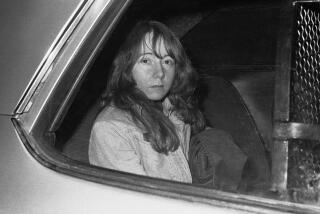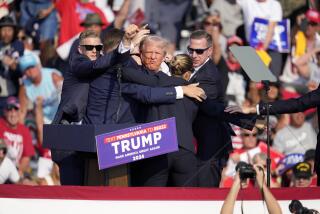Graphic J.F.K. Assassination Car Photos, Records Released
- Share via
COLLEGE PARK, Md. — Gruesome photographs of the interior of President John F. Kennedy’s limousine were released Tuesday by the National Archives, but nearly 50,000 documents also made public shed little additional light on the assassination.
The black and white photos, taken after the vehicle was returned to Washington from Dallas after Kennedy’s death, bear mute testimony to the horrors witnessed by those riding close to the President’s car in the Nov. 22, 1963, motorcade.
Bloodstains are smeared on the Lincoln’s leather seats, and blood has soaked the carpeted footwells and the upholstery underneath the seat. A crushed, bloodstained bouquet of chrysanthemums, given to Jacqueline Kennedy at Love Field, sit on the seat near where Kennedy slumped; rose petals from another bouquet are scattered on the floor.
Accompanying diagrams show that bullet fragments were retrieved from the vehicle’s floor; autopsy X-rays of a portion of Kennedy’s skull also are included.
The documents also feature numerous photos of a crack on the inside of the limousine’s windshield, a piece of evidence investigators used to help conclude that Kennedy had been killed by bullets fired from the rear.
Eight spent cartridges, test-fired from the Manlicher-Carcano rifle with which Lee Harvey Oswald allegedly killed Kennedy, were also released. Accompanying documents make clear that the ballistics tests show that the bullets match those used in J.F.K.’s assassination.
The photos were among files from FBI headquarters in Washington and FBI field offices in Dallas, New Orleans and Mexico City.
The records were among 224 boxes of material, containing at least 50,000 new documents. They were released under a 1992 law that requires federal agencies to release all records related to their investigations of Kennedy’s murder and Oswald’s killing.
“What is here today will not cause significant change in what people think--either for people who think there was a conspiracy or people who think there wasn’t,” said Steve Tilley, the J.F.K. liaison at the National Archives. “What we have here today is a lot of detail.”
More to Read
Sign up for Essential California
The most important California stories and recommendations in your inbox every morning.
You may occasionally receive promotional content from the Los Angeles Times.










